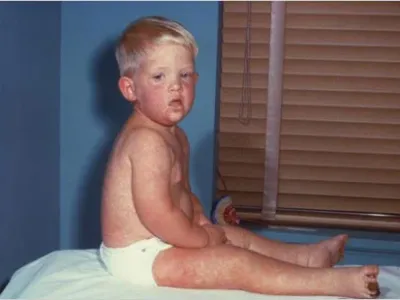Mar 22, 2006 (CIDRAP News) – The World Health Organization (WHO) has published a new draft of its plan for spotting and stopping a budding influenza pandemic.
"The WHO pandemic influenza draft protocol for rapid response and containment" posits the possibility of identifying an emerging pandemic in time to stop it by using antivirals, isolation, quarantine, and social distancing. The document is a revision of a first draft that was released in late January.
The concept is based on mathematical models suggesting that early, efficient human-to-human transmission of a potential pandemic virus could be identified and contained if authorities had appropriate surveillance in place and moved quickly to quell the outbreak. The models relied on mass dispensing of antiviral drugs in an outbreak zone, along with social distancing and quarantine measures.
"No attempt has ever been made to alter the natural course of a pandemic near its start," WHO says. "Moreover, given the unpredictable behavior of influenza viruses, no one can know in advance whether the start of a pandemic will begin gradually, following the emergence of a virus not yet fully adapted to humans, or be announced by a sudden explosion of cases, thereby precluding any attempt at containment."
WHO has convened experts three times since December to consider a draft protocol for early containment of a pandemic flu, the document states.
To further that effort, an international stockpile of antivirals has been created with industry donations. Three million treatment courses will be ready by May for use only in an intervention to contain the virus at it source, the WHO said.
Success would depend on prompt response to suspicious clusters of human influenza cases, WHO acknowledged. The mass dispensing of antivirals would need to start within 21 days after detection of the first case of efficient human-to-human transmission. Accomplishing that implies succeeding at a number of earlier steps, including detecting the clusters, communicating quickly and accurately from the local to the international level, and quickly obtaining outside assistance in investigation and response.
The WHO recommends investigating clusters of three or more people with unexplained moderate-to-severe respiratory illness and with illness onsets within 7 to 10 days of one another. In addition, the patients in the cluster must have a history "strongly suggesting potential exposure to the H5N1 virus," such as travel in an infected area, direct contact with infected or dead birds or animals, close contact with an H5N1 patient, or possible occupational exposure.
The WHO identified four trigger points for attempting rapid containment of a virus:
- Moderate-to-severe respiratory illness or death in three or more healthcare workers with no known exposure to H5N1 other than contact with ill patients, and laboratory confirmation of H5N1 infection in at least one of those workers
- Moderate-to-severe respiratory illness or death in 5 to 10 people with evidence of human-to-human transmission to at least some of them, and lab-confirmed H5N1 diagnoses in more than two of them
- Compelling evidence that more than one generation of human-to-human transmission has occurred
- Isolation of a novel virus with avian and human genes, or a virus with an increased number of mutations not seen in avian isolates, from one or more people with moderate-to-severe respiratory illness, along with epidemiological evidence of a change in transmission pattern
The WHO also identifies situations in which rapid containment should not be tried: when studies fail to confirm H5N1 or another novel influenza A virus; when the affected population is too big to provide for basic needs and emergency care during containment; and when more than 4 to 6 weeks have passed since the initial cluster was identified.
The initial protocol is still being refined, with a meeting scheduled Mar 28 with Roche officials to refine procedures for delivering the company's oseltamivir supplies to WHO. "A more detailed operational plan, in line with actions recommended in this protocol, is the expected outcome," WHO said in its report.
Further meetings "with countries and partners" will be scheduled to address drug distribution issues. Currently the plan indicates that Roche stands ready to ship 1.5 million doses stored in the United States and another 1.5 million doses stored in Switzerland.
The WHO document further describes the roles and responsibilities of countries in helping to contain a pandemic, as well as the roles and responsibilities of WHO.
One of the agency's roles will be to train rapid reaction teams over the next few months, according to a Mar 10 news release from the agency. The teams will include epidemiologists, laboratory specialists, and logistics, ethics, and communications experts, the release said.
"We will develop a roster of people who have received a great deal of training about what in fact are the containment procedures, what is influenza, what is the nature of the threat," said Keiji Fukuda, acting director of the WHO's global influenza program, in the news release. Reuters news service reported on Mar 10 that WHO would train about 100 experts for the rapid response.
Fukuda noted in another Mar 10 Reuters report that aspects of the WHO containment plan raise challenging ethical issues, including some related to quarantine.
"It is clear that if we try to contain a pandemic—and this has never been attempted before, there is no precedent—that there is a very good chance that we will fail, that we will not be able to stop it," Fukuda said. "However, there is also a very good chance that if we mount this kind of effort we may slow down the spread of a pandemic virus early on. If we do that, if we buy some substantial amount of time and that means weeks, then we can really increase the chance for having more vaccines available more rapidly."
Michael T. Osterholm, PhD, MPH, a leading pandemic preparedness advocate and a skeptic on the possibility of containment, said the revised WHO plan represents "a more realistic approach" to containment than the previous version. "However, the activity of the last 2 months in countries throughout Asia, Europe, and Africa only further supports the fact that early recognition and documentation of an emerging pandemic is going to be difficult if not impossible," he added.
"If a pandemic flu strain had emerged in any number of areas where cases or clusters have occurred in recent months, that pandemic strain would've been long gone to the rest of world by now," said Osterholm, director of the University of Minnesota Center for Infectious Disease Research and Policy, publisher of the CIDRAP Web site.
He said he still regards a flu pandemic, sooner or later, as inevitable. "The only thing that's really going to take pandemic influenza off the table is an influenza vaccine that can be produced in advance of the actual pandemic strain, and for which there is global production capacity and distribution ability to quickly put a world seal over this virus, not a local blanket," he said.
See also:
WHO's pandemic draft plan for rapid response and containment, issued Mar 17
http://www2.wpro.who.int/NR/rdonlyres/EDA8DF37-AD85-425E-9431-1D80476C2639/0/WHOHQ20060530.pdf
Mar 10 United Nations news release on rapid reaction teams to contain pandemic
http://www.un.org/apps/news/story.asp?NewsID=17760&Cr=bird&Cr1=flu
Jan 27, 2006, CIDRAP News story on earlier version of the WHO containment plan
Aug 3, 2005, CIDRAP News story describing the studies on which the WHO protocol is based



















